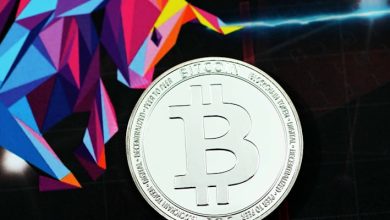Interview with a Metaverse Developer: The Role of Crypto in Virtual Worlds

- Exploring the intersection of technology and finance in virtual reality
- Insights from a developer on the evolution of virtual economies
- The impact of cryptocurrencies on shaping the future of metaverses
- Unveiling the secrets behind building digital assets in virtual worlds
- The challenges and opportunities of integrating blockchain in the metaverse
- A deep dive into the role of NFTs in redefining virtual experiences
Exploring the intersection of technology and finance in virtual reality
As we delve into the realm of virtual reality, we cannot ignore the profound impact that technology has had on the financial sector. The intersection of these two fields opens up a world of possibilities, especially with the rise of cryptocurrencies.
Virtual reality technology has revolutionized the way we experience and interact with the digital world. With the integration of blockchain technology, virtual worlds are becoming more secure and decentralized, offering new opportunities for financial transactions.
Cryptocurrencies, such as Bitcoin and Ethereum, play a crucial role in virtual economies by providing a digital form of currency that is not tied to any government or central authority. This has led to the emergence of virtual marketplaces where users can buy, sell, and trade digital assets using cryptocurrencies.
Developers in the metaverse are exploring innovative ways to incorporate crypto into virtual worlds, creating new financial systems and opportunities for users. From virtual real estate to in-game assets, the possibilities are endless in this exciting new frontier.
Insights from a developer on the evolution of virtual economies
In the ever-evolving landscape of virtual economies, developers play a crucial role in shaping the future of digital worlds. As a developer myself, I have witnessed firsthand the rapid evolution of virtual economies and the increasing integration of crypto currencies. The rise of blockchain technology has enabled new possibilities for creating secure and transparent virtual economies, revolutionizing the way in which in-game assets are bought, sold, and traded.
One key insight that I have gathered from my experience is the growing importance of decentralized finance (DeFi) in virtual economies. DeFi platforms allow users to lend, borrow, and stake their digital assets without the need for intermediaries, providing a level of financial freedom that was previously unheard of in virtual worlds. This shift towards decentralized finance has the potential to democratize access to virtual assets and empower users to take control of their in-game wealth.
Another trend that I have observed is the increasing popularity of non-fungible tokens (NFTs) in virtual economies. NFTs are unique digital assets that are indivisible and cannot be replicated, making them highly sought after by collectors and gamers alike. The ability to own and trade rare and exclusive in-game items through NFTs has opened up new opportunities for developers to create immersive and engaging virtual experiences.
Overall, the evolution of virtual economies is a dynamic and exciting process that is driven by innovation and technological advancements. As developers continue to explore the possibilities of blockchain technology and crypto currencies, virtual worlds are poised to become more immersive, interactive, and interconnected than ever before. By staying ahead of the curve and embracing the potential of decentralized finance and NFTs, developers can create virtual economies that are truly groundbreaking and transformative.
The impact of cryptocurrencies on shaping the future of metaverses
Cryptocurrencies have been instrumental in shaping the future of metaverses by introducing new opportunities for virtual economies to thrive. As virtual worlds continue to evolve, the integration of cryptocurrencies has enabled developers to create more immersive and interactive experiences for users.
One of the key impacts of cryptocurrencies on metaverses is the ability to facilitate seamless transactions within virtual environments. By utilizing blockchain technology, users can securely buy, sell, and trade virtual assets using digital currencies. This has led to the emergence of decentralized marketplaces where users have greater control over their virtual possessions.
Moreover, cryptocurrencies have also empowered developers to implement innovative monetization strategies within metaverses. Through the use of non-fungible tokens (NFTs), virtual assets can be tokenized and traded as unique digital collectibles. This has opened up new revenue streams for developers and content creators, while also providing users with opportunities to truly own their digital assets.
Furthermore, the integration of cryptocurrencies has fostered a sense of community and collaboration within metaverses. Through the use of decentralized autonomous organizations (DAOs), users can participate in governance decisions and collectively shape the direction of virtual worlds. This has created a more inclusive and democratic environment where users have a stake in the development of the metaverse.
In conclusion, the impact of cryptocurrencies on shaping the future of metaverses cannot be understated. From enabling seamless transactions to fostering community engagement, digital currencies have revolutionized the way virtual worlds operate. As the metaverse continues to expand, the role of cryptocurrencies will only become more pronounced in driving innovation and growth within virtual environments.
Unveiling the secrets behind building digital assets in virtual worlds
Building digital assets in virtual worlds involves a complex process that requires a deep understanding of the underlying technology and the dynamics of the metaverse. Developers need to consider various factors such as scalability, interoperability, and security when creating these assets. By leveraging blockchain technology, developers can ensure transparency and immutability, making it easier to track and verify ownership of digital assets.
One of the key secrets behind successful digital asset creation in virtual worlds is the use of smart contracts. These self-executing contracts enable developers to automate processes such as asset transfers, royalties, and licensing agreements, reducing the need for intermediaries. By utilizing smart contracts, developers can create a more efficient and secure ecosystem for digital asset ownership and exchange.
Another important aspect of building digital assets in virtual worlds is the integration of cryptocurrencies. Cryptocurrencies play a crucial role in enabling seamless transactions within the metaverse, allowing users to buy, sell, and trade digital assets with ease. By incorporating cryptocurrencies into virtual worlds, developers can create new economic models and revenue streams, enhancing the overall user experience.
In addition to smart contracts and cryptocurrencies, developers must also focus on creating engaging and immersive experiences for users. By incorporating interactive elements, social features, and customizable options, developers can increase user engagement and retention in virtual worlds. This not only attracts more users but also fosters a sense of community and belonging within the metaverse.
Overall, building digital assets in virtual worlds is a multifaceted process that requires a combination of technical expertise, creativity, and innovation. By unveiling the secrets behind successful asset creation, developers can unlock the full potential of the metaverse and create unique and valuable experiences for users.
The challenges and opportunities of integrating blockchain in the metaverse
Integrating blockchain technology in the metaverse presents both challenges and opportunities for developers. One of the main challenges is the scalability of blockchain networks, which can limit the speed and efficiency of transactions within virtual worlds. However, by utilizing layer 2 solutions such as sidechains or off-chain protocols, developers can overcome these limitations and enhance the user experience.
On the other hand, integrating blockchain in the metaverse opens up a world of opportunities for creators and users alike. Smart contracts can enable new monetization models, such as NFTs (non-fungible tokens), allowing users to buy, sell, and trade virtual assets securely. Additionally, decentralized governance mechanisms can empower communities to make collective decisions and shape the virtual world according to their preferences.
Overall, the integration of blockchain in the metaverse is a complex process that requires careful planning and execution. Developers must strike a balance between security, scalability, and user experience to create a seamless virtual environment. By leveraging the advantages of blockchain technology, developers can unlock new possibilities for innovation and collaboration in the metaverse.
A deep dive into the role of NFTs in redefining virtual experiences
NFTs have been making waves in the virtual world, redefining the way we experience digital assets and virtual environments. These unique tokens have opened up a world of possibilities for creators and users alike, allowing for true ownership of digital items and experiences. By leveraging blockchain technology, NFTs provide a secure and transparent way to buy, sell, and trade virtual assets, creating a new paradigm for the metaverse.
One of the key roles of NFTs in virtual experiences is their ability to imbue digital items with scarcity and uniqueness. This scarcity factor adds value to virtual assets, making them more desirable and collectible. In a world where everything can be easily replicated or copied, NFTs offer a way to create truly one-of-a-kind items that can be owned and traded like physical objects.
Moreover, NFTs have the potential to revolutionize the gaming industry by enabling players to truly own in-game assets and carry them across different virtual worlds. This interoperability opens up a whole new level of immersion and engagement for gamers, allowing them to build and customize their virtual identities in ways never before possible. With NFTs, virtual experiences become more personalized and meaningful, driving deeper connections between users and the metaverse.




